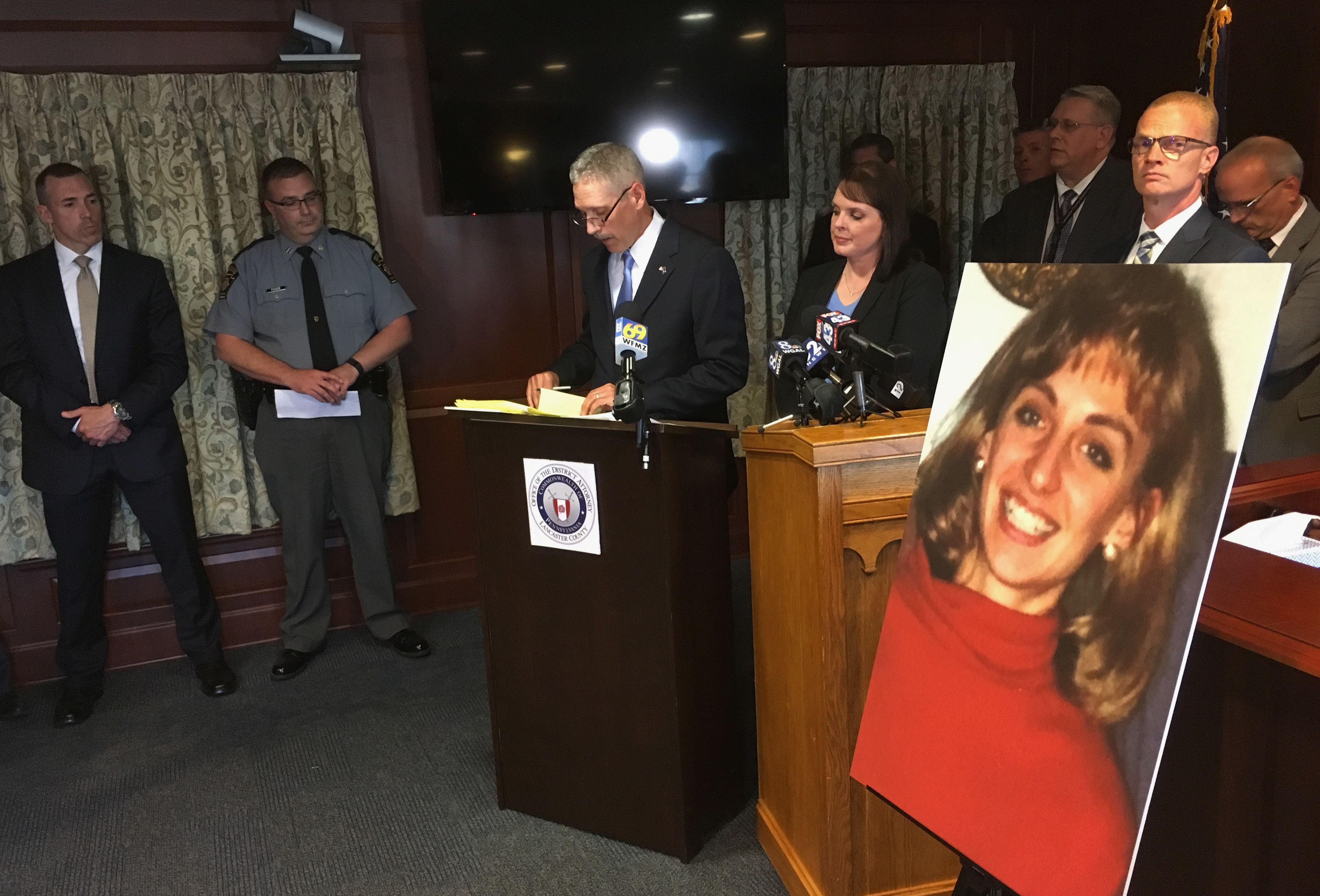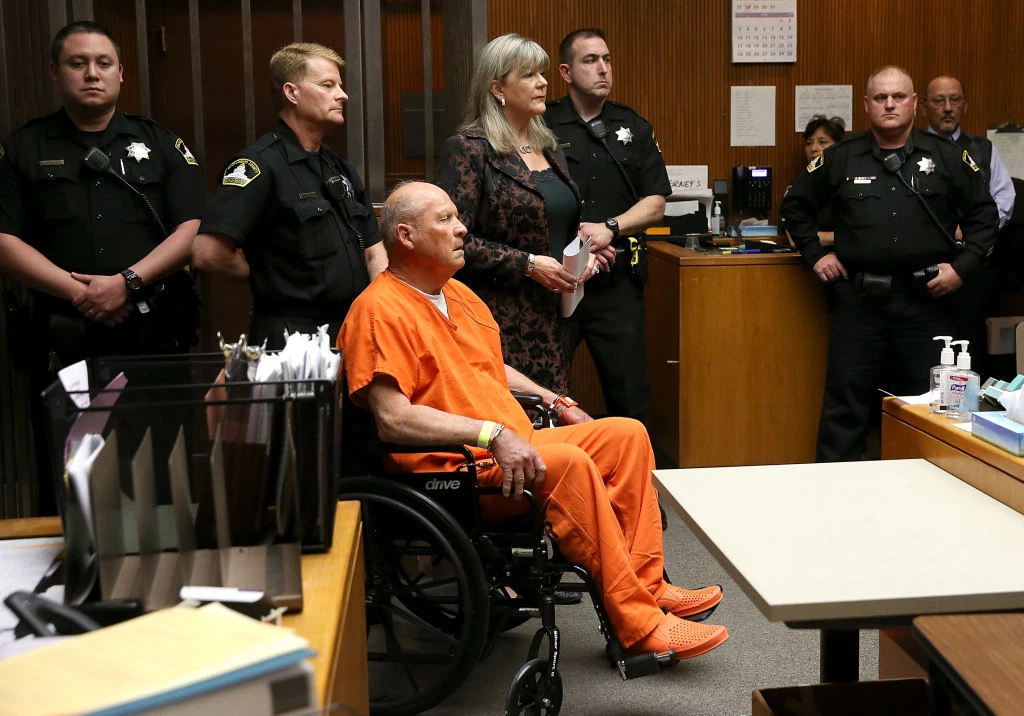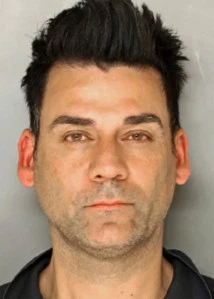
Authorities found a suspect in the 1992 murder of Christy Mirack using a DNA database. Photo by Mark Scolforo / AP.
For more than 25 years, Christy Mirack’s murder was shrouded in mystery — longer than the beloved Pennsylvania schoolteacher was alive. Mirack was found dead in her home just a few days before Christmas 1992, strangled and badly beaten, her clothes askew as if she had been sexually assaulted. The presents she had collected for her students were never delivered.
The ferocity and seeming senselessness of the crime stunned the community, including Mirack’s younger brother Vince, a medical device salesman. “I always try to keep it out there in the forefront that she was a great person,” Vince tells Rolling Stone. “The children that she taught adored her, the parents did; her colleagues did. [Teaching] was something that she worked for her whole short life, and it was tragically taken away from her — just like that.”
“It was really one of the worst crimes we had. A nightmare crime,” says Lancaster District Attorney Craig Stedman. “We had this guy at large for all this time.” And that was the rub: the wondering. No one could figure out why Mirack’s life had been taken, and the question haunted family and friends for decades.
However, in June 2018 popular local DJ Raymond “DJ Freez” Rowe, 49, was arrested in connection with Mirack’s brutal death — thanks to the melding of DNA technology and the work of an innovative crop of genealogists.
The schoolteacher’s murder wasn’t the only cold case that recently heated up; at least eight arrests have been made over the last few months, and cold-case units are champing at the bit to tackle more. The magic bullet that has made it possible for law enforcement officials to find their targets? A pastime beloved by hobbyists the world over: the family tree. Specifically, law enforcement figured out that they could team with up with forensic genealogists to create DNA profiles from decades’ old suspect DNA and upload those profiles into genealogy databases, following a gnarled family tree until it bears fruit.
The field of forensic genealogy was brought to the public’s attention after the April 25th, 2018 arrest of Joseph James DeAngelo, a 72-year-old retired cop from California, who is alleged to be the Golden State Killer. The GSK had been an obsession among law enforcement and criminology hobbyists for decades. He was suspected of committing at least 12 murders, 50 rapes and 100 burglaries in California between 1974 and 1986, according to crime writer Michelle McNamara’s posthumously released 2018 book I’ll Be Gone in the Dark. “The Golden State Killer,” a moniker McNamara gave him, was only one of his nicknames; he is also suspected of being the East Area Rapist, the Original Night Stalker and the Visalia Ransacker.
Recently retired detective Paul Holes had been on the case since the late 1990s, when he was a newly minted deputy sheriff in California’s Contra Costa County. “I started working on this case as a hobby,” he says. “Nobody ever assigned this case to me; I just decided, ‘I’m going to take this and run with it.’ It just snowballed over the years until I was obsessed, to be frank, with getting this solved.”
Advances in DNA technology since the then allowed Holes to connect the various aliases of the GSK, leading to speculation that all crimes were committed the same man. Still, that man’s DNA was not found in the Combined DNA Index System, or CODIS, the FBI’s program of support for criminal justice DNA databases. Holes started his foray into forensic genealogy in 2012, delving into the Y-chromosome DNA of the suspect’s sample — which can help uncover common last names and runs along the male line of a family — but that didn’t get him anywhere. It was only when he first learned about autosomal DNA testing in February 2017 that doors started opening.

Joseph James DeAngelo, the suspected “Golden State Killer”, appears in court last April.
* * *
Autosomal DNA, according to pioneering forensic genealogist Dr. Colleen Fitzpatrick of IndentiFinders International, is inherited from both parents and can be used for more all-inclusive research than Y-DNA. “It can find cousins along every line of your family,” she tells Rolling Stone. “Because the coverage it provides for your family tree is so comprehensive, it has eclipsed [use of] the Y-DNA.”
Holes assembled a crack team consisting of fellow law enforcement and an outside genealogy consultant who Holes says prefers to remain anonymous to assemble a comprehensive DNA profile from a sample collected at the scene of the 1980 double homicide of suspected GSK victims Lyman and Charlene Smith. That profile was then uploaded to a site called GEDMatch, and, after some genealogical digging — and after acquiring more DNA samples from DeAngelo’s car door handle and trash — a suspect was found.
“His name never came up in the investigation,” Holes marvels. “We have a master suspect list of over 8,000 names. All the suspects that each of us investigators had drummed up… And his name never was in that list.”
According to Fitzpatrick, the battle to use genealogy databases for forensic work was a bit uphill in the beginning. Services like 23andMe started using autosomal DNA about 10 years ago, but due to their strict privacy policies, law enforcement couldn’t really touch that info.
“You can imagine it as a fence,” she says. “All of the genetic genealogy people — Ancestry, 23 [and Me] and My Heritage — all those people were on one side of the fence with all of their massive amounts of data, and the forensic people were on the other side,” she explains. “So the forensic people are looking over the fence at all this unbelievable data they’d love to get to catch the Golden State Killer [and other suspects].”
Fitzpatrick opened a gate in that fence, however, when she teamed up with United States Marshal Pete Elliott in Ohio to find the true identity of Joseph Newton Chandler III, a mysterious Cleveland resident who killed himself in 2002. The man had stolen the identity of a long-deceased 8-year-old boy in the 1970s, and his true name was only revealed to the public in June of 2018 after Fitzpatrick cracked the code via Y-DNA and GEDMatch: he was Indiana-born Robert Ivan Nichols, a decorated World War II veteran who abandoned his family in the 1960s. The team is still trying to find out why Nichols went on the run, and, according to Fitzpatrick and Elliott, speculation among the Internet set has been extensive; it’s been hypothesized that he’s everyone from the Zodiac Killer to mysterious hijacker D.B. Cooper. However the jury, Elliott says, is still out on that.
“It’s phenomenal,” Elliott tells Rolling Stone. “It’s a whole new tool in our toolbox to be able to use forensic genealogy. The work that Dr. Fitzpatrick did not only put us in the ballpark, she gave us the exact seat that Joseph Chandler was sitting in.”
The key ingredient in cracking both cases was undoubtedly a site that looks straight out of the early days of the Internet: GEDMatch, an open-source site that allows people to upload their raw genetic profiles — obtained via 23andMe and other services — and track down relatives and ancestors. Anyone can upload a genetic profile if it fits certain parameters — including the profile created by Holes’ team for the GSK suspect and the one IdentiFinders created for Nichols. If a family member also has their info in the database, a forensic genealogist like Fitzpatrick can trace a suspect’s family tree.
At first, GEDMatch co-founder Curtis Rogers was nervous about law enforcement using his site to nab the GSK and other suspects. Rogers, a Floridian in his late seventies, has been dabbling in genealogy since he was a teen. “I was concerned about the privacy of our people,” he tells Rolling Stone. “It’s taken me months to really settle that in my mind so that I’m comfortable with the way we’re operating. On one hand, you have this guy who made Jack the Ripper look like a choirboy, and thank God he’s off the streets. On the other hand, we do have a responsibility to our people to keep their privacy, whether it’s appropriate or not.”
Roger’s solution was to make it as transparent as possible that law enforcement could, in fact, use the site to track down suspects. According to the now-retired businessman, some people chose to leave the site, but numbers remain high; he’s not sure how many users GEDMatch has, but he wagers somewhere around a million. Moreover, users have reached out to him the wake of the GSK arrest and praised his part in it, however tangential.
“I got an email from a person who said, ‘I want to make sure that my DNA is out there and is as visible as possible on your site, because my father was a serial killer. I want to make sure that any unsolved cases, the people can get some finality,’” he says. “And I think that’s an attitude that people have.”
* * *
The popularity of cases like the GSK undoubtedly made it easier for forensic genealogists to justify working with law enforcement, like prominent genealogist CeCe Moore. Moore’s work up until recent months was mostly dedicated to cracking unknown identity cases: John and Jane Does and missing persons. She’s also worked as a consultant on shows like PBS’ Finding Your Roots.

Raymond Charles Rowe was arrested last June and charged with the 1992 murder of schoolteacher Christy Mirack.
Now, Moore is working with Parabon Nanolabs, located in Reston, Virginia, which does work for law enforcement in the field of DNA phenotyping, a process by which they can attempt to suss out what a person looks like based on their DNA. The method that Parabon uses to create a DNA profile is not the same as the one IdentiFinders employs, but the info that is derived from either method is GEDMatch compatible, which meant that Moore could widen her search from just missing people to suspects after the GSK case tore down the fence. She was, in fact, instrumental to nabbing Mirack’s suspected killer.
“Thanks to the GSK case, I feel we went a very long way in establishing official consent from the participants in GEDMatch,” she says. “You couldn’t have asked for a bigger case or more publicity.” And, since DeAngelo’s arrest — and noting that her community felt widely positive about it — she’s been making the papers herself: her work is in part responsible for seven arrests so far.
According to the District Attorney on the Mirack case, his team started working with Parabon in 2017 to create composite images to release to the public in hopes of IDing the murderer. Vince Mirack was initially hopeful: “I thought that was it, I thought that was going to be the piece of information that we needed to break the case. When we got a picture of an individual, and you’re looking at somebody saying, ‘Wow. This is really it.’ The science is supposedly really accurate. But it didn’t happen that way.”
Following the arrest of the alleged Golden State Killer, the real work began, when the D.A. asked Parabon and Moore to do their magic with GEDMatch. After testing a discarded water bottle and wad of chewing gum from the suspect, Pennsylvania police arrested Rowe in late June 2018 and charged the popular party DJ with criminal homicide.
“It’s come together so quickly,” the D.A. says. “It’s just really amazing, game-changing technology for law enforcement. So it’s exciting in that sense that we’re looking not just as this case, but at the potential for other cases.”
Despite generally positive response to the apprehension of the suspected GSK and other cold case suspects, not everyone is sold on the methods of forensic genealogists, including a contingent at the ACLU. “The [GSK] investigators’ decision to upload a detailed genetic profile to GEDmatch — a public database that can be accessed by any person for any reason — raises troubling privacy concerns,” Vera Eidelman, a William J. Brennan fellow with the ACLU’s Speech, Privacy, and Technology Project, tells Rolling Stone. “Even if DeAngelo is found guilty of the crimes he is accused of, penalties for such crimes do not typically entail releasing a person’s entire genetic makeup to the world. We may not be so troubled by such an intrusion when it comes to a serial killer, but imagine the implications of using this technique for other crimes, from shoplifting to trespass[ing].”
* * *
Forensic genealogists, however, are energized. Fitzpatrick is looking to the horizon regarding how we might be able to profile would-be murderer and serial killers. “We can psychologically profile these people that we haven’t been able to access,” she says. “We’re going be able to start understanding crime, long term crime, long term criminals. … And then that’s going assist investigations outside of the genealogy.”
Moore hopes that these advances in her field will give those would-be murderers pause — and help solve murders that have thus far been gathering dust. “Cold cases, I can’t say they will be a thing of the past entirely, but if there is biological material available on a cold case, there’s a very high likelihood that it can and will be resolved,” she says. “I hope that changes things. I hope that makes society a safer place.”
Holes, for his part, can now put a two-decade-plus obsession somewhat to rest. At least that specific obsession.
“For 24 years the case had taken over my life,” he says. “Having it solved is both thrilling and a relief. However, I’m finding I’m experiencing a bit of a void; I miss the thrill of the pursuit. I feel like I need to find another case to go after.”
Despite the flurry of arrests in recent months, more work is still to be done — like taking all the suspects to trial — and those involved are not exactly resting easy. Vince Mirack might have a while to wait for any sort of answers in the case of his sister’s death, and Rowe, for his part, could be facing the death penalty.
“When this happened, I told my wife, ‘I’ll do this day by day,’”Mirack says. “Because I don’t want to try to predict the future, I’m just going to go with what happens and what’s in front of me; that’s kind of how we’ll approach this.”